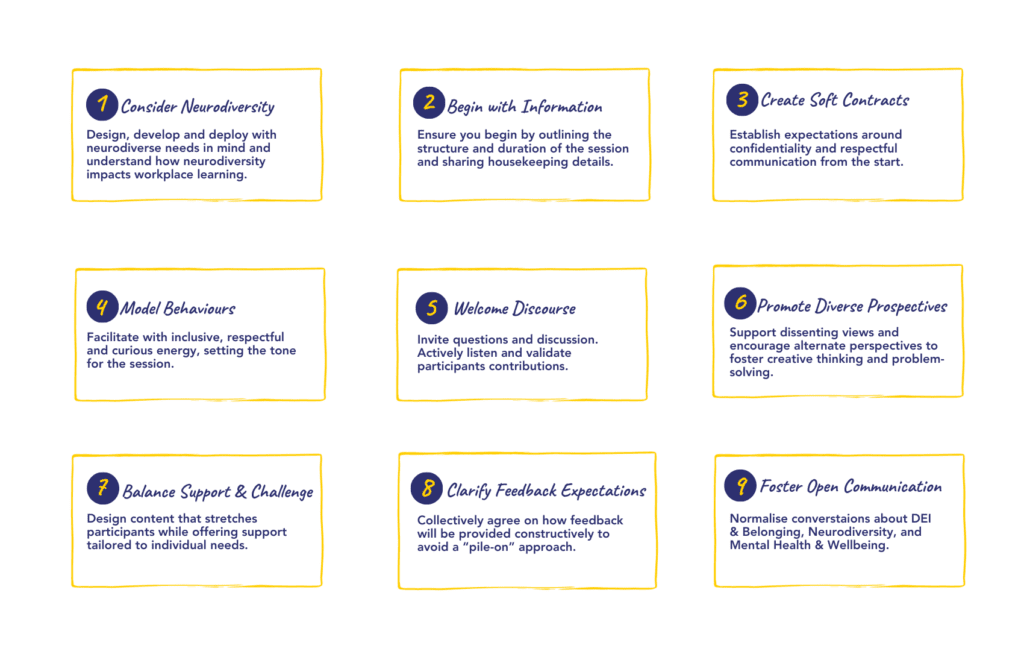Imagine a learning environment where participants feel psychologically unsafe, hesitating to share questions, ideas, or vulnerabilities for fear of judgement. This lack of psychological safety hinders the learning process. Conversely, when participants feel safe to experiment, their learning flourishes.

The concept of psychological safety, pioneered by Amy Edmondson, is crucial not just in the workplace but also when facilitating learning. When participants feel safe to take risks, ask questions and admit mistakes, we have the essential ingredients for an effective learning experience. In this article, we explore how facilitators can cultivate a psychologically safe environment for learners.
At LEXi, we rely on 9 core elements to help us foster psychological safety when facilitating.

During design and all preparation for delivery, keep in mind the potential neurodiversity in the participant group. Educate yourself about neurodiversity and how it impacts an individual’s learning. By addressing, and where appropriate, making relevant adjustments for diverse needs you create an environment where participants feel safe and included.
Start by giving clear instructions and information, outlining the agenda, duration of the session, and covering housekeeping. This foundational step reduces anxiety and helps participants feel psychologically safe to ask questions and engage actively in the learning.
Establish ground rules at the beginning of the session, addressing expectations around confidentiality and respectful communication. By encouraging an environment where participants feel free to express their thoughts without judgement, you build collective trust.
The facilitator’s style and behaviour act as a model for inclusive, respectful, and curious communication. Your energy sets the tone, making it more likely that participants will feel able to think creatively and share ideas.
Explicitly welcome questions, comments, and discussion. When participants share their ideas, receive these warmly and openly and be generous with praise. Demonstrating active listening and reflecting back what you hear not only fosters psychological safety but also enhances the overall learning experience.
Encourage respectful dissent and hold space for diverse perspectives to coexist simultaneously. Allowing room for multiple subjective perspectives leads to opportunities for collaboration, innovation, creativity, and problem-solving.
Effective learning environments provide challenging experiences while also offering ample support. Understanding your audience’s specific strengths and areas for development is crucial. If you know your audience, you can design and deliver learning experiences that stretch everyone to their fullest potential whilst maintaining a safe learning environment for all.
Collectively agree on how feedback will be provided constructively to avoid a “pile-on” approach. If introducing a feedback model, suggest that the group use it as an aid when delivering their own feedback to one another within the session. This reinforces the importance of considered communication among participants.
Normalise conversations about DEI & Belonging, neurodiversity, and mental health & wellbeing. Honest and transparent communication is at the centre of both personal and professional growth. Modelling an appropriate level of personal disclosure encourages the participants to do the same and to engage in learning as their authentic selves.

Learn more about our work at LEXi Learn and feel free to contact us if you would like to talk more about creating safe and inclusive learning experiences.